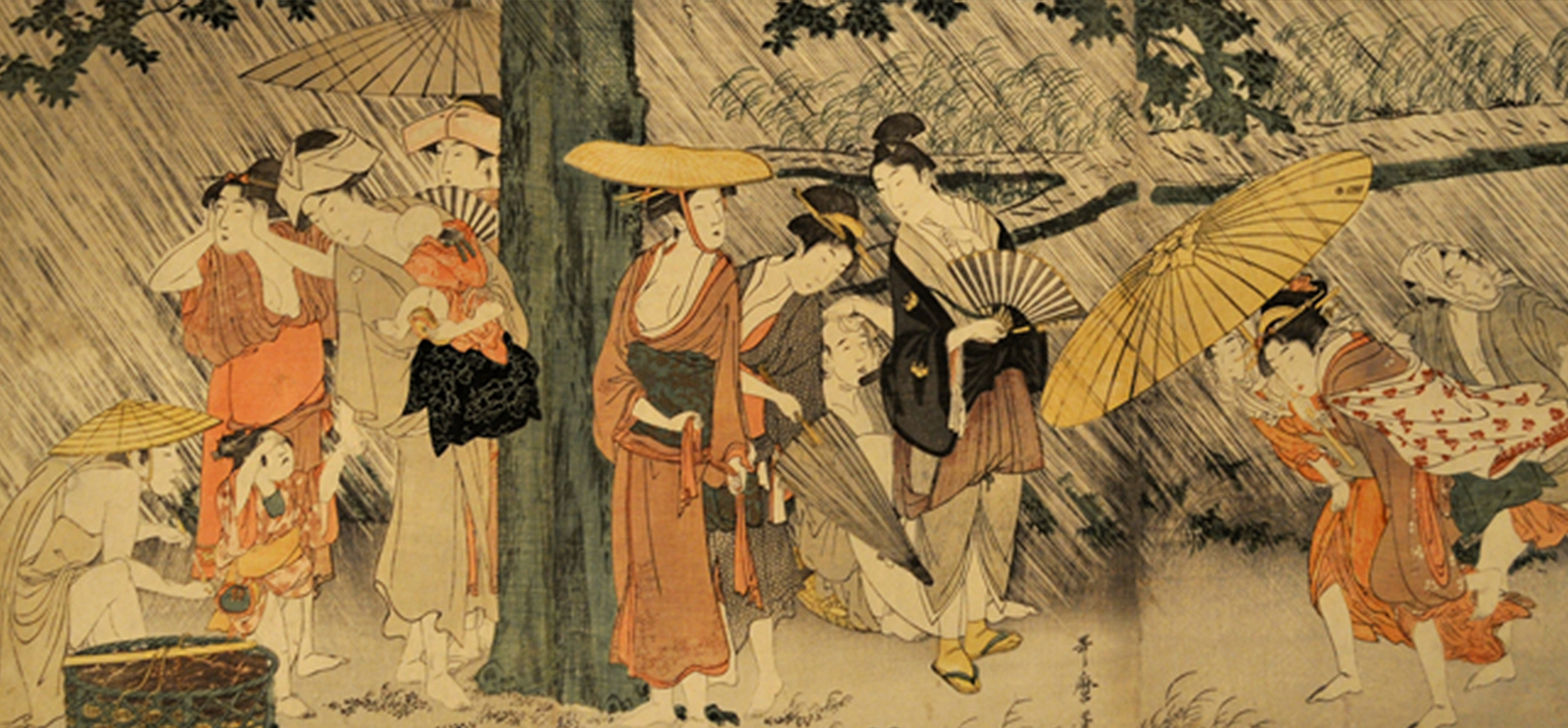
Kitagawa, Utamaro, Taking Shelter from a Sudden Summer Shower Under a Huge Tree. (Courtesy of the Smart Museum of Art, from the Frances Gaylord Smith collection, 1972.14)
“With Ukiyo-e prints, one of the rules of thumb is that a print costs the price of a bowl of noodles,” says University of Chicago art historian Chelsea Foxwell, who specializes in Japanese art and architecture.
During Japan’s Edo period (1603–1867), woodblock prints often depicted the joys of urban life, the “culture of play” that emerged in the late 17th century, specifically in the capital city of Edo, present-day Tokyo.
“These prints originated within that culture of the guidebooks to the famous ‘beauties’ of the pleasure quarters,” says Foxwell, “guidebooks on how to have a good time when you’re in the city.”
Few could afford the luxuries of the pleasure quarters. But for the price of a quick lunch, anyone could purchase a lightweight and expertly crafted piece of art, a taste of the lives of the rich and famous. These prints were called Ukiyo-e, or “pictures of a floating world,” from the Buddhist term meaning that the world is transient and full of suffering. Edo artists adopted a more positive connotation: a fleeting but euphoric realm where, Foxwell says, people “would enter a fictional mirage-like world where they could abandon their everyday troubles and have fun for a night.”
Taking Shelter from a Sudden Summer Shower under a Huge Tree, a 1790s print from the Smart Museum’s collection, depicts a gathering of dissimilar people caught off guard on the outskirts of the city. Such a diverse group—beauty, samurai, farmer, deliveryman—would not usually be seen together on the streets of Edo. But chance summer storms were common, and print buyers could imagine themselves swept into this kind of fantastic encounter that erased class constraints. “You can read it as a socially awkward moment,” says Foxwell, “or as a socially liberating moment.”
